Day 3 Session Notes–How to Create Change

— Excited to talk about favorite topic of change
- Real life example from Cigna to embrace innovation transformation and provide value
- Will end with practical tips for change leadership in your org
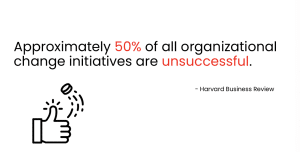
— An alarming fact is that almost of all organizational changes fail
- Would you feel leaving project success to coin flip?
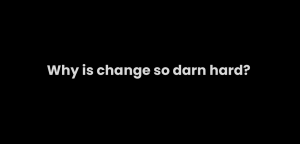
— Got me thinking as to why is change so hard?
- Let’s step back
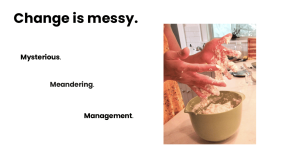
— Well, change is messy, and uncomfortable
- Change is like baking bread
— When I first started baking bread, felt intimidating and hard to imagine going from A to B
— Change is
- Mysterious— Give latitude to fail and learn along the way
- Meandering—Path to vision won’t be straight line and embrace flexibility with discomfort
- Management— Change needs someone to lead the way
- Shout out to Deanna Smith’s talk on this topic
— Let’s dive in
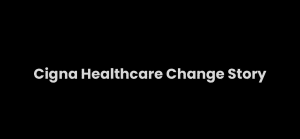
— Cigna Healthcare had DesignOps team supporting ExpressScripts digital communication
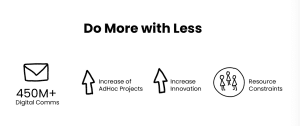
— Facing problem of doing more with less, a common problem, and stressful to experience
— Additional context
- Half a billion communications sent out by ExpressScripts
- Increase in surprise ad-hoc projects that popped out of nowhere
- Projects came in and design team needed to react
- Desire to increase innovation in products and services, but this required time and commitment
- Limited number of team members
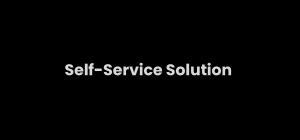
— Created self-service solution for team members
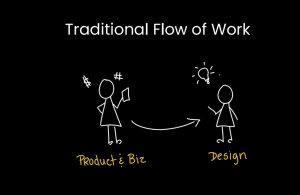
—Previously, there was one way flow of work with product and business to design team
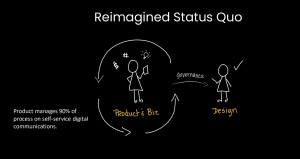
— Self service reimagined workflow and asked if product and business managed and designed digital products in certain use cases, to reduce workload and increase capacity
— Design elevated to governance practicioner of role for branding and design
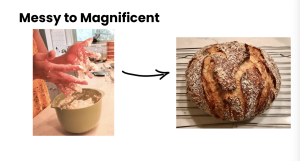
— Did self-service solve problem of doing more with less

— Self-service was solution and tackled product and innovation phase and working model
- Brought people to workshops and analyzed current state of process
— Where to go in the future and asked the following— where does the design team invest its time
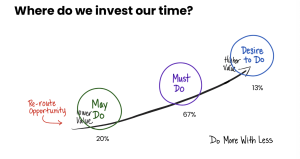
— Asked where to invest time, but with upward arrow had higher and lower value work for projects
- Categorized work in several groupings
— May-Do Bucket
- Can do based on availability like ad-hoc project
— Must-Do Bucket
- Work that required full time design support
— Desire-to-Do
- Innovative projects to push products and services forward
- Don’t reflect percentage of products
— Percentage breakdown as
- 20% May-Do, 67% Must-Do, 13% Desire-To-Do
— Wanted desire to switch things around, and rerouting may-do work elsewhere
- Re-routing product was enticing
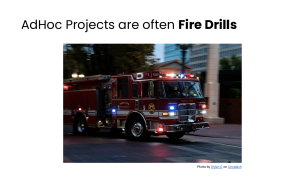
— If could reroute requests could save headaches and increase efficiencies
- Off-ramp delivery method for business partners
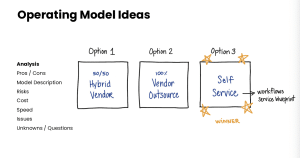
— Came up with three operating models
- Hybrid of 50% split — But didn’t free up enough time
- Vendor Outsource— Risk of overhead
- Self-Service— Too much model and biggest unknowns and biggest rewards
— Discuss each of models with criteria on left and each pros and cons
- Reservations on previous experiences with other people writing content for communication and bursting pre-conceived notions
— Went to workflows to figure out how self-service worked
- Service blueprints to touch points risks to systems and data, and reviewing how model would operate
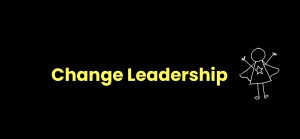
— Change Leadership came with execution
— Prior to this DesignOps led innovation workshops
- Had chance to be change leader and lead new way of working
— Establish controls, strategies and help people adapt to change
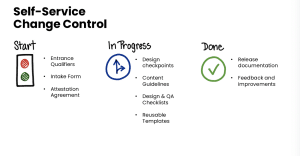
— Risk mitigation and change controls were top-of-mind due to novel nature of ask
— Start
- Entrance Qualifiers and intake forms to see who was going in, and building governance model around it
- Attestation Agreement to sign on dotted line that teams would acknowledge responsibility
— While in self-service, included:
- Design checkpoint team
- Content guidelines for team and how to speak to customers
- Checklist and critical steps to go through like design, dev, and QA
- Reusable templates to jump start adoption
— End of Self-Service
- Release documentation
- Retrospectives and surveys to integrate feedback
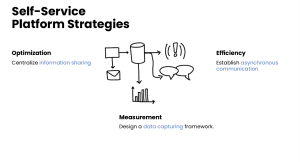
— Thought about tools in control and existing best practices to stand-up self-service platform and capitalize what worked with team
- Optimization measurement and efficiency
— Here’s how info was centralized
- Intake form led to online tracking sheet for all project info related to self-service and letting them know about flags in process
- Tons of cell and sheet linking, to integrate everything into master spreadsheet
— Data capturing framework and what data we need to know to make judgments in future and pull data from online tools used into summary sheet, and pulled into data dashboard
— Perfect well of info to share with leadership and upper management
— Efficiency was as follows:
- Asynchronous communication through certain info and execute hand-offs with team to stay away from email chart and another meeting, to capitalize on free capacity
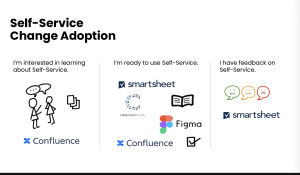
— Now let’s talk on Adoption
- Change control, platform strategy, and where people come in and shoes of stakeholders and well thinking about self-service, and what we needed to show
— Confluence to create accessible online overview of what model looked like, and sample form to start
— Starting process?
- Started pilot program to introduce to tools like SmartSheets, CheetahDigital, and Confluence, in intimate settings to empower people and let them be successful in self-service
— Mechanism for feedback
- Retros and SmartSheets, and surveys for official feedback capturing
- Constantly asked along the way what was going on, and co-designed with stakeholders

— Now everything came together with mixing tiny ingredients
- Right conditions and approach with change leadership driving similar magic and strategies leading the way
— Inspiring teams to trust us and follow us a new path
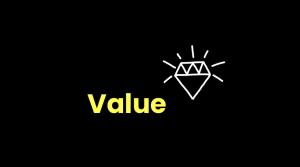
— So did self-service work?
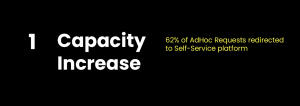
— Capacity increase redirected ad-hoc requests
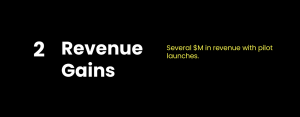
— Revenue Gains, several million in revenue with pilot launches
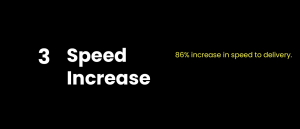
— 86% increase in speed to delivery
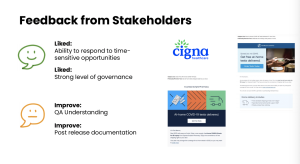
— Feedback from stakeholders
- Ability to respond to time-sensitive communications in response to market forces and strong-level of governance and comfort guardrails
— Improving QA and very good feedback
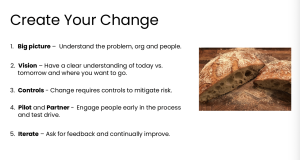
— When going from and creating changes
- Big Picture: Grasp org, problem and people
- Vision: Have a clear understanding of today vs tomorrow and where you want to go
- Controls: Change requires controls to mitigate risk
- Pilot and Partner: Engage people early in process and test drive
- Iterate: Change never ends to ask for feedback and continuously improve
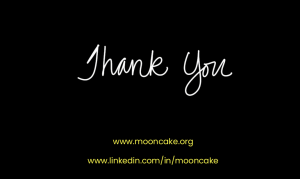
— Thank you, and hope it inspired you
Q&A
- Does change fail because it doesn’t happen fast enough for business?
- No, in our case, went back to business several times to share progress and solved two problems of business response to market forces, and our problem was ad-hoc requests consuming us relative to high-value projects
- Common ground where business problems solved then win-win
- Let us come to table and solve problem together
- Team had totally brand new admiration of design process from stakeholders
- Self-service was education in design process
- No, in our case, went back to business several times to share progress and solved two problems of business response to market forces, and our problem was ad-hoc requests consuming us relative to high-value projects
- Was choice of self-service specific to conditions in org? Where would self-service not work?
- Business advocated for self-service, but design was worried about giving too much power to stakeholders— based on previous experiences of poor communications
- When not right solution
- Has to do with problem solving, and maturity of org
- Analysis is required— and designops tool should be applied early on
- Being strategic and metrics with you and have DesignOps be more strategic in leadership
- Biggest issue is awareness? How did you reach all of org to establish model?
- Began with one line of business and started small
- Successful changes start small, with one line of business and demonstrate success, and other lines of business will want in action
- Big impactful win for business and new model that design created and had someone to lead change
- Show you can succeed in one line of business people will be eager to find out

